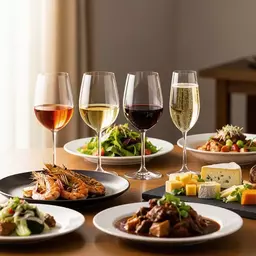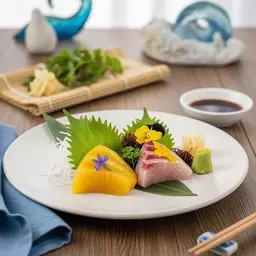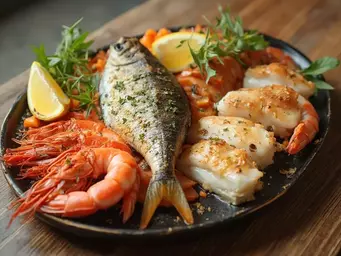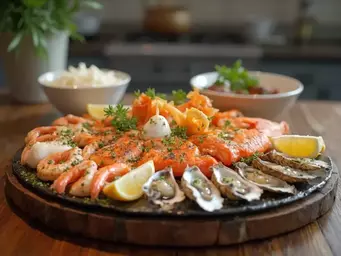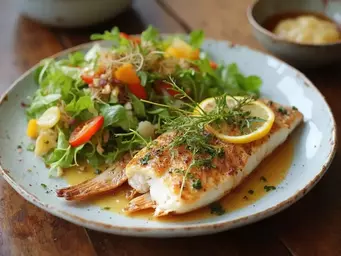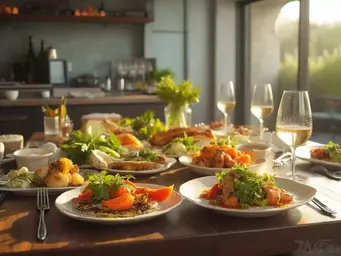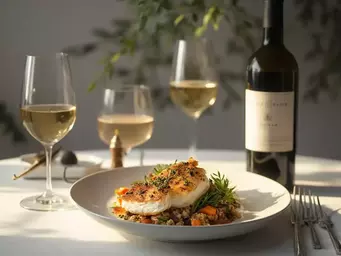Pairing Australian Cuisine with Wine
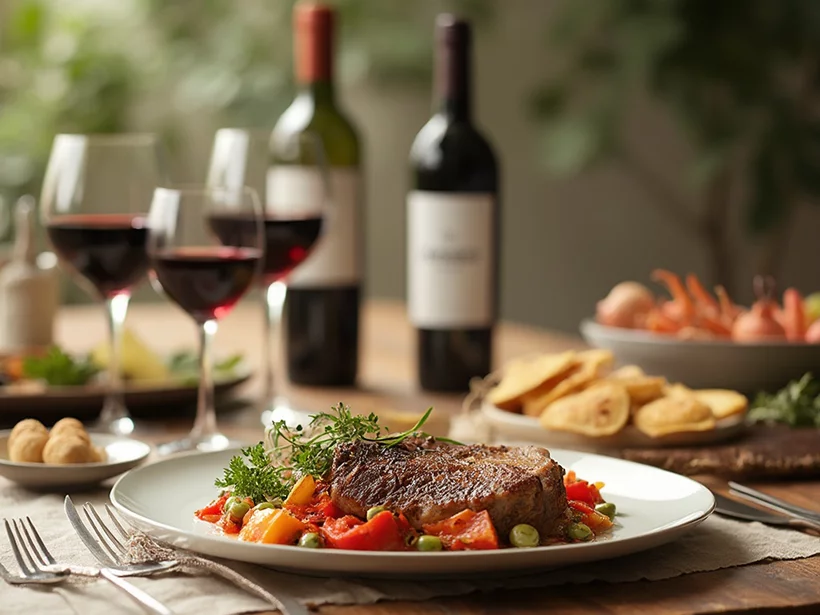
As we immerse ourselves in the delicious world of modern Australian cuisine, it's intriguing to consider how regional influences shape the food we enjoy today. Have you ever wondered what makes a dish truly Australian? Let’s explore the key insights together!
What You Will Learn
- Modern Australian cuisine combines traditional techniques with innovative twists, creating a unique culinary identity.
- Indigenous ingredients like wattleseed and finger lime are increasingly featured in contemporary dishes, showcasing Australia’s rich heritage.
- Coastal regions provide exceptional seafood, influencing the culinary landscape from Sydney to Tasmania.
- Sustainable practices are a priority, especially concerning seafood and local produce, ensuring the preservation of culinary traditions.
- Trends such as plant-based options and health-conscious cooking are gaining popularity, reflecting changing consumer preferences.
- The art of pairing food with local wines can elevate dining experiences, focusing on balance and experimentation.
Regional Influences on Modern Australian Cuisine
Modern Australian cuisine is a dynamic blend of regional flavors and global influences. The visual below highlights the key elements that shape its unique character.
Indigenous Ingredients
Native ingredients like wattleseed, finger lime, and quandong are increasingly integrated into contemporary dishes, reflecting Aboriginal culinary knowledge.
Coastal & Seafood Focus
Abundant access to pristine waters provides diverse seafood, shaping dishes from Sydney to Tasmania.
Fresh Regional Produce
Each state contributes unique fruits and vegetables, forming the foundation of many Australian meals.
Cultural Fusion
The blending of flavors from Asia, Europe, and the Middle East reimagines traditional recipes with a local twist.
Understanding the Essence of Modern Australian Cuisine
Modern Australian cuisine is a vibrant tapestry woven from diverse regional influences, reflecting the unique landscapes, cultures, and produce of our beautiful country. As I delve into this culinary journey, I am constantly amazed by how our food tells stories of place and community. The essence of modern Australian cuisine lies in its ability to blend tradition with innovation, creating dishes that are not only delicious but also deeply connected to our heritage.
In my experience at The Yellow Tail Table, I've found that the heart of Australian cooking is found in the quality of local ingredients. From the coastlines to the outback, each region contributes its own distinct flavors, textures, and cooking techniques. But what exactly are these regional influences, and how do they shape the dishes we enjoy today? Let’s explore!
Exploring Regional Influences on Australian Dishes
Australia’s culinary landscape is rich and varied, shaped by both Indigenous traditions and the multitude of cultures that have settled here over the years. Here are some significant regional influences that define our cuisine:
- Indigenous Ingredients: Native ingredients like wattleseed, finger lime, and quandong have increasingly found their way into contemporary dishes, showcasing the depth of Aboriginal culinary knowledge.
- Coastal Flavors: Our access to pristine waters offers an abundance of seafood, influencing dishes from the bustling markets of Sydney to the fishing towns of Tasmania.
- Fresh Produce: Each state contributes unique fruits and vegetables, such as tropical fruits in Queensland or hearty root vegetables in Tasmania, which provide the basis for many meals.
- Cultural Fusion: The blending of flavors from Asia, Europe, and the Middle East creates a dynamic food scene, where traditional recipes are reimagined with a local twist.
These regional influences not only enhance the flavors of our dishes but also tell the story of our nation’s history and the people who inhabit it. It’s quite fascinating how our culinary identity continues to evolve!
Characteristics of Modern Australian Cuisine and Its Evolution
Modern Australian cuisine is characterized by its emphasis on fresh, high-quality ingredients and a focus on seasonality. This culinary evolution has cultivated an environment where chefs are inspired to experiment with flavors while respecting traditional techniques. Key characteristics include:
- Innovative Techniques: Chefs are often seen pushing the boundaries by using techniques like sous-vide and fermentation to enhance textures and flavors.
- Sustainability: There's a strong commitment to sustainable practices, especially when it comes to seafood and local produce, ensuring that our culinary heritage is preserved for future generations.
- Casual Dining: The rise of casual dining reflects our laid-back lifestyle, where sharing plates and communal dining experiences have become the norm.
As I explore recipes and trends at The Yellow Tail Table, I continually witness how these characteristics resonate with food lovers. Each dish is a celebration of flavor, creativity, and community, inviting everyone to engage with the Australian dining experience.
Australian Cuisine Trends: A Look at Modern Innovations
As we embrace the future of food, modern innovations are at the forefront of Australian cuisine. These trends not only reflect our culinary evolution but also highlight our commitment to creativity and sustainability. Some exciting trends include:
- Plant-Based Options: The rise of vegetarian and vegan dishes showcases the versatility of Australian produce and offers delicious alternatives that cater to a growing audience.
- Health-Conscious Cooking: An increased focus on health has led to lighter, nutrient-rich dishes that highlight fresh ingredients without compromising flavor.
- Global Influences: Inspiration from global culinary movements continues to shape our food culture, leading to exciting flavor combinations and fusion dishes.
In my culinary adventures, I love discovering how these trends manifest in everyday cooking and dining experiences. They not only inspire me but also connect me with fellow food enthusiasts eager to explore the vibrant flavors of modern Australian cuisine!
Frequently Asked Questions About Modern Australian Cuisine
Engage with Your Culinary Journey!
What has been your most memorable experience with Australian cuisine? Whether it was a family gathering, a meal at a local restaurant, or a dish you tried while traveling, we would love to hear your stories! Share your thoughts below:
Summarizing the Art of Pairing Australian Dishes with Local Wines
As we dive into the rich world of modern Australian cuisine, it’s clear that the art of pairing food with local wines is an essential aspect of our culinary culture. The insights gleaned from expert chefs highlight the importance of understanding flavors, acidity, and body when making pairings. Each dish tells a story, and when matched with the right wine, it can elevate your dining experience to new heights! For a deeper understanding of Australia's wine policy and industry, the Australian Government's Department of Agriculture provides valuable information on supporting the sector.
Here are some key takeaways from our explorations:
- Balance is Key: Aim for harmony between the food and wine, allowing both to shine.
- Consider the Ingredients: Fresh, local produce plays a pivotal role in both dishes and the wines that complement them.
- Don’t Be Afraid to Experiment: Personal preferences matter, so trust your palate when trying new combinations.
Pairing well-selected wines with modern Australian dishes can transform a meal into a memorable culinary adventure. So, what’s your favorite pairing? Sharing those experiences can help us all appreciate the nuances of our local flavors even more!
Encouraging Wine Exploration and Food Pairing Experiences
At The Yellow Tail Table, I believe that wine exploration should be an engaging journey for everyone! I invite you to dive deeper into the world of Australian wines and dishes. Perhaps you’ve stumbled upon a delightful pairing that you can’t wait to share? Your successes can inspire others to discover their own culinary treasures.
Here are some ways you can get involved:
- Try new pairings with friends during your next gathering.
- Participate in local wine tastings for hands-on experience.
- Join our community by sharing your favorite pairings in the comments!
Let’s cultivate a space where we can all learn and grow together, celebrating the wonderful flavors that Australia has to offer. The stories behind each pairing are what truly make our culinary journey special!
Offering Resources for Further Learning on Australian Cuisine and Wines
If you’re eager to expand your knowledge, I encourage you to explore various resources that delve into the intricacies of Australian cuisine and its wines. Whether you’re looking for recipe books, online courses, or local workshops, there’s a wealth of information ready for you!
- Check out Wine Australia for insights on regional varietals. For a comprehensive overview of Australia's food and wine sector, including policy and trends, refer to documents like those found on the Parliament of Australia's website.
- Visit Australian Food Directory for regional recipes and culinary stories.
- Join forums or social media groups focused on Australian dining culture!
These resources can provide invaluable support as you embark on your wine and food pairing adventures. Remember, every exploration is an opportunity to deepen your understanding of our vibrant culinary landscape!
Understanding Terroir and Its Influence on Wine Characteristics
Terroir is a fascinating topic that plays a crucial role in shaping the characteristics of wine. It encompasses all the environmental factors—such as climate, soil, and topography—that influence the unique flavors of each varietal. By understanding terroir, we can better appreciate how specific wines complement the diverse ingredients found in modern Australian cuisine.
- Climate: The climate affects grape ripening and flavor profiles.
- Soil Type: Different soil types impart distinct characteristics to the grapes.
- Regional Practices: Local winemaking traditions shape the final product as well.
By learning about terroir, we can enhance our wine-pairing skills and truly honor the local produce that defines our cuisine. So, the next time you enjoy a glass of wine, consider its origins and how they might enhance your dining experience!
Recap of Key Points
Here is a quick recap of the important points discussed in the article:
- Indigenous Ingredients: Incorporating native ingredients like wattleseed and finger lime enriches modern Australian dishes.
- Fresh, Local Produce: Emphasis on seasonal and regionally sourced fruits and vegetables enhances flavor and sustainability.
- Innovative Cooking Techniques: Chefs are using modern techniques such as sous-vide and fermentation to elevate traditional recipes.
- Cultural Fusion: The blending of diverse culinary traditions creates unique flavor profiles in Australian cuisine.
- Wine Pairing: Understanding the balance of flavors between food and wine is crucial for an enhanced dining experience.
- Community Engagement: Sharing culinary experiences fosters a deeper appreciation for local flavors and culinary heritage.
